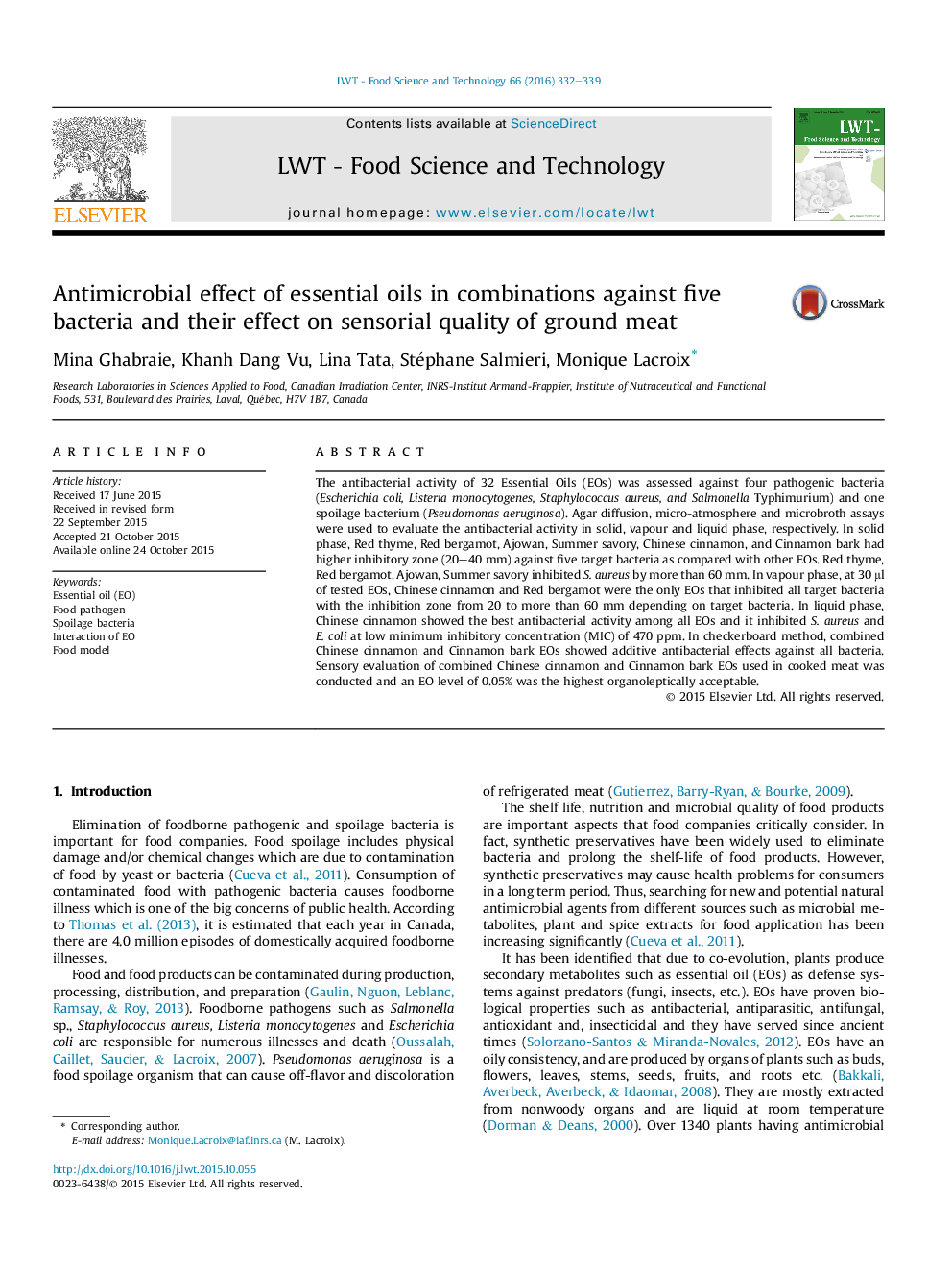| Article ID | Journal | Published Year | Pages | File Type |
|---|---|---|---|---|
| 6400961 | LWT - Food Science and Technology | 2016 | 8 Pages |
â¢The antibacterial activity of 32 plant Essential Oils (EOs) was evaluated.â¢Agar diffusion, micro-atmosphere and broth microdilution assays were used.â¢Synergistic effect of combined EOs was conducted by checkerboard method.â¢Two EOs had additive effects against 5 bacteria and was sensorial acceptable at 0.05%.
The antibacterial activity of 32 Essential Oils (EOs) was assessed against four pathogenic bacteria (Escherichia coli, Listeria monocytogenes, Staphylococcus aureus, and Salmonella Typhimurium) and one spoilage bacterium (Pseudomonas aeruginosa). Agar diffusion, micro-atmosphere and microbroth assays were used to evaluate the antibacterial activity in solid, vapour and liquid phase, respectively. In solid phase, Red thyme, Red bergamot, Ajowan, Summer savory, Chinese cinnamon, and Cinnamon bark had higher inhibitory zone (20-40 mm) against five target bacteria as compared with other EOs. Red thyme, Red bergamot, Ajowan, Summer savory inhibited S. aureus by more than 60 mm. In vapour phase, at 30 μl of tested EOs, Chinese cinnamon and Red bergamot were the only EOs that inhibited all target bacteria with the inhibition zone from 20 to more than 60 mm depending on target bacteria. In liquid phase, Chinese cinnamon showed the best antibacterial activity among all EOs and it inhibited S. aureus and E. coli at low minimum inhibitory concentration (MIC) of 470 ppm. In checkerboard method, combined Chinese cinnamon and Cinnamon bark EOs showed additive antibacterial effects against all bacteria. Sensory evaluation of combined Chinese cinnamon and Cinnamon bark EOs used in cooked meat was conducted and an EO level of 0.05% was the highest organoleptically acceptable.
